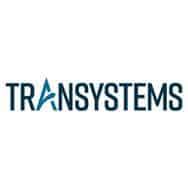In this episode, I talk with Graciela Patino, senior vice-president at WSP, about the concept of shore power and its essential role in minimizing the environmental impact of cruise ships while advancing sustainable maritime practices.
***The video version of this episode can be viewed here.***
Engineering Quotes:
Here Are Some of the Questions We Asked Graciela:
- What are some of the key challenges involved in designing electrical and control systems for movable bridges?
- How does working on rehabilitation projects for movable bridges differ from designing new ones?
- Could you explain how shore power works and why it plays a vital role in environmental sustainability?
- How has your experience with movable bridges contributed to your work on shore power projects?
- What are the biggest engineering challenges the industry faces when implementing shore power systems at ports?
- What skills or experience do engineers need to succeed in large-scale sustainable projects like shore power?
- What final piece of advice would you give to students starting out in electrical engineering or sustainable technology projects?
Here Are Some of the Key Points Discussed About Shore Power and Its Environmental Benefits:
- Designing electrical and control systems for movable bridges requires precise coordination among multiple disciplines to achieve safety and functionality. Fixed physical spaces and the integration of modern technology, like programmable logic controllers, increase the complexity of these projects.
- Rehabilitation projects for movable bridges present greater challenges than designing new ones because they involve adapting existing infrastructure to incorporate modern technology and meet safety standards. Engineers navigate fixed spaces and coordinate updates across all disciplines to ensure functionality and compliance.
- Shore power connects docked ships to utility power, reducing reliance on onboard generators and cutting greenhouse gas emissions significantly. This cleaner, cost-effective energy solution improves environmental sustainability by minimizing air pollution in ports.
- Experience with movable bridges provides valuable insights into coordinating across disciplines and addressing spatial and operational constraints. These skills directly apply to shore power projects, where careful planning is essential to accommodate moving ships and complex infrastructure.
- Key challenges in shore power implementation include working within tight physical spaces, managing structural loads of existing infrastructure, and ensuring compatibility with various ship types. Collaborative efforts among disciplines and suppliers play a critical role in overcoming these obstacles.
- Engineers require strong technical expertise, interdisciplinary coordination skills, and adaptability to evolving technologies. Emphasizing collaboration and learning from experienced industry professionals is essential for success in large-scale projects.
- Students benefit from building their careers step by step, mastering technical skills before pursuing management roles. This incremental approach establishes a solid foundation in both technical and collaborative aspects, supporting long-term success in their field.
More Details in This Episode…
About Graciela Patino

Graciela has been involved in the design and development of the shore power project for PortMiami. The project includes electrical design, calculations, plan preparation, technical special provisions, and interdisciplinary coordination and construction support to provide electrical supply to five cruise berths for various vessel classes at each berth. Scope included design and permitting of 2.5 miles of dedicated duct bank to provide 13.8kV primary services to prefabricated, modular shore power substations for both 6.6kV and 11kV power to cruise ships. The power service supplier required substations capable of power factor corrections. Other requirements included flush mounted connector pits for power control and communications embedded with the surface of each dock to minimize interference to dock operations. Design included 75-year Sustainable Seal-Level-Rise. Extensive coordination of existing cruise berth and upland features, including structural, civil, utilities, and marine appurtenances, also was required.
Graciela Patino also is experienced in the design, startup, and commissioning of movable bridges. Her detailed design work has focused on instrumentation and controls, motor control and drives, and power distribution. This includes control using distributed control systems, programmable controllers, hardwired controls, short circuit fault analysis, and cable and conduit layouts. Graciela also has experience and expertise in design management, field supervision, and systems commissioning. She has performed detailed shop inspection and field inspection of movable bridge power and control systems.
Graciela is a contributing author to “Movable Bridge Inspection Safety,” Better Roads, November 2001.
About the Host
Mathew Picardal, P.E., SE

Sources/References:
WSP
Shore Power at PortMiami
Lakeland Electric
EPA
Connect with Graciela Patino on LinkedIn
Please leave your comments or questions in the section below on shore power and its environmental benefits.














